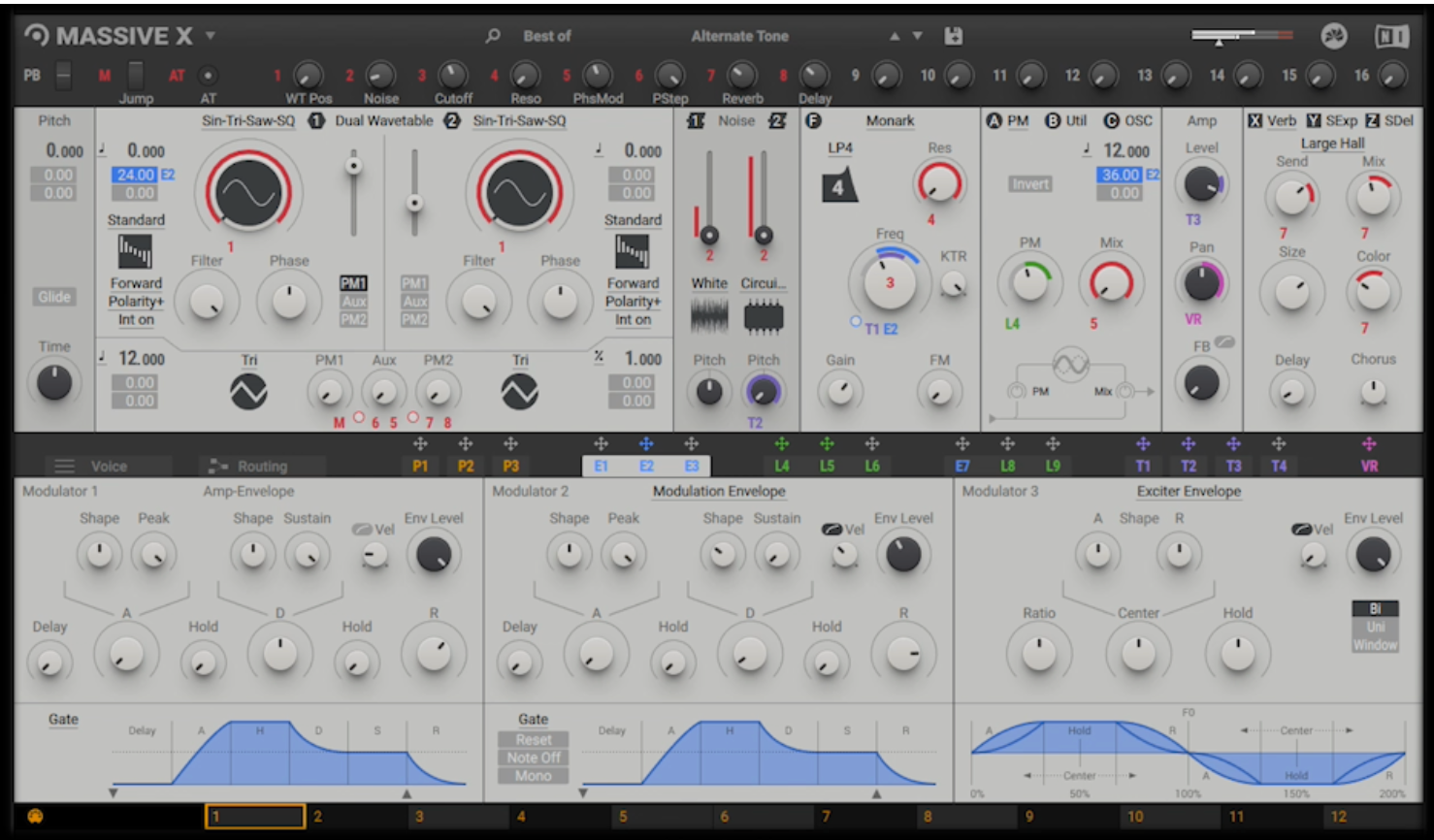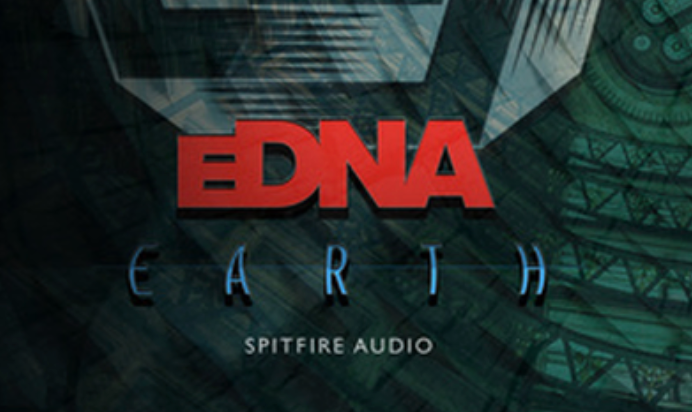Massive X by Native Instruments is finally here! If you've been living under a rock for the past year or so, Massive X is Native Instrument's next installment of their incredibly popular Massive wavetable synthesizer. Massive defined the sound of EDM genres for the past 10 years, and dominated the market until Serum by Xfer Records came out. They're pushing Massive X as the synth for the next decade, and thats its designed to evolve over time (the original Massive never really changed much).
To bring you all up to speed, Massive X (and Massive) are whats known as 'wavetable synthesizers'. This means that instead of algorithmically generating oscillator waveforms, the waveforms are saved in a table that can be morphed to generate exciting sonic material. This means that one oscillator can create the sounds of dozens of oscillators by scanning the wavetable, and by scanning the wavetable throughout a sound even more new sounds can be created.
Massive X Overview
As you can see from the image above, Massive X certainly looks modern, but what new features does it bring to the table? Before we dive into the details of Massive X i'll break down what I consider to be some of the strengths and weaknesses of the synth.
Strengths:
-
Modern GUI, very intuitive
-
Incredibly powerful performance modulation
-
Modulation assignments incredible easy to see and manage
-
Lots of presets and wavetables
-
Many wavetable modes that drastically modify the sound
-
Very good filter and effect selection
Weaknesses:
-
Still no way to make custom wavetables
-
Still no way to add more wavetables
-
No visual feedback for how modulation effects parameters in real-time
Massive X includes two wavetable oscillators, 170 wavetables and 10 oscillator modes (with sub-modes), two noise modules, brand new filter modules, up to 3 insert FX (voice specific) and up to 3 stereo FX. The routing system makes the synth almost modular if you choose to dive down that rabbit-hole, meaning that you can completely change how components of Massive X are routed.
Massive X Modulation
The modulation sources in Massive X are almost overwhelming in functionality for how simple they are to use, so keep that in mind if you feel confused as I explain them to you. First up is the performance and remote octave modulation source, which allows you to draw up to eight bars of modulation that can be triggered either from when a note is triggered, running continuously, or when you hit a keyswitch (which effectively means you can perform these modulation sources).

Massive X offers nine slots for LFO and envelope modulation. LFO's can be chosen from a simple shape, a randomized shape, and you can change every way that the LFO is triggered. Envelopes are broken down into incredible detail, and you can define the time and slope of each aspect of the envelope to get the perfect movement of your sound.

The Trackers allow you to modulate depending on how and which notes you play. This is where you can define velocity sensitive modulation, note specific modulation, and much more. You can literally define curves for every single note on your keyboard!

Last up is the VR Mod, or the Voice Randomizer. This functions as a quick and easy randomization source to add a little bit of chaos into your parameters.

Massive X Sound
Of course this is all well and good, but how does the damn thing sound?! Check out this video I made exploring the sounds of the presets that come with Massive X:
I think a lot of people have been misunderstanding Massive X, and saying that it sounds 'plastic' or 'just like every other soft-synth'. Massive X is a software wavetable synthesizer, trying to be a software wavetable synthesizer. This isn't virtual analog, and this isn't real hardware, so I wouldn't expect it to sound like anything other than a wavetable synthesizer.
It is capable of some very organic sounds, but manage your expectations people! If you want a warm sounding analog synth, then go get a Moog; if you want a software emulation of an analog synth then go get Diva by U-He!
Massive X: Learn More
I think the best way to learn any new piece of gear is by 'doing' and not watching, so if you've picked up Massive X and are eager to dive in then load it up, and follow along with this video as I show you the basics and how to make 3 patches on the synth.
Conclusion
I don't think anyone can really give their review of Massive X until its been out for a few months. A huge part of Massive X's success will be in how its workflow aids songwriting over time compared to something like Serum or the OG Massive, which you need to spend time to figure out. That being said at the moment i'm loving it, and I think if you're just getting into the synth market it could be the synth for you! The only real question is whether you should get this before something like Serum, and I think the answer is no - Serum is still the king of software electronic music, but as I said before time will tell. Massive X stands on its own as a fantastic synth capable of generating almost any sound imaginable with minimal effort.



